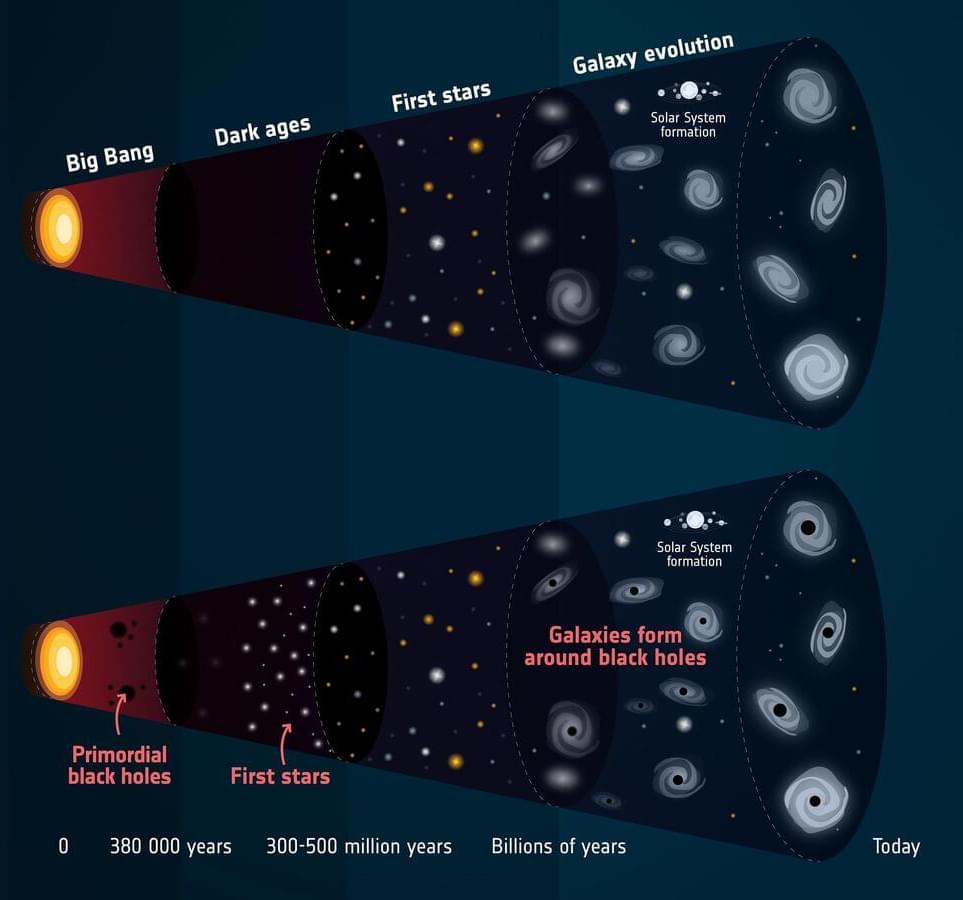Did black holes form immediately after the Big Bang? How did supermassive black holes form? What is dark matter? In an alternative model for how the Universe came to be, as compared to the ‘textbook’ history of the Universe, a team of astronomers propose that both of these cosmic mysteries could be explained by so-called ‘primordial black holes’. In the graphic, the focus is on comparing the timing of the appearance of the first black holes and stars, and is not meant to imply there are no black holes considered in the standard model. Credit: ESA.

My basic postulate is that dark matter is made up of particles that move at a speed greater than the speed of light. We can imagine this by analogy with the speed of sound. When, for example, an airplane breaks through a sound barrier and reaches a speed greater than the speed of sound, it no longer hears sound. Very analogously, dark matter is not visible because it moves at a speed higher than the speed of light. By extrapolating this postulate, it can be imagined that black holes are actually a kind of star of dark matter. They collect the surrounding matter, by huge gravity, and merge with each other into larger objects. I guess when they collect enough the matter of the known universe, a new big bang will happen, similar to a supernova explosion, from which the next universe will be formed again. In it, again, a part of the particles that will move at a speed less than the speed of light, will form a similar universe as we know it, which will expand like ours after the explosion. The rest of matter will continue to represent black matter and energy, whose laws we do not yet know, except that they possess gravity.